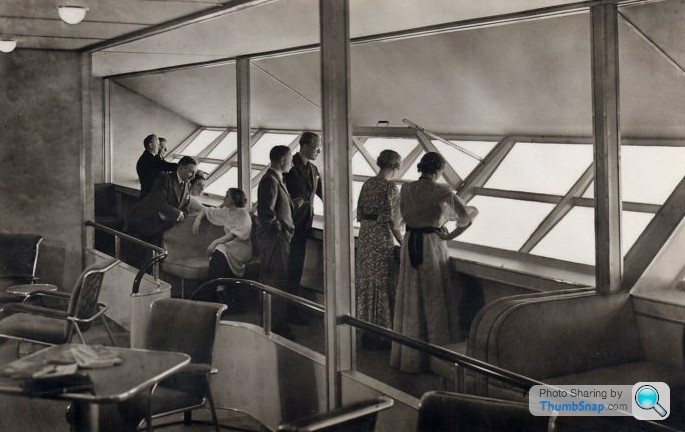Wasn't the Hindenburg crash really weird
Discussion
Don't think there's been an in depth PH discussion for a while about it, just that after all this time, numerous investigations, quite a bit of actual footage, lots of credible eyewitnesses...
And there's still umpteen theories about what actually happened and no concensus. Including some intriguing sabotage claims. Wiki article is far too long to provide excerpts.
https://en.m.wikipedia.org/wiki/Hindenburg_disaste...
It had made 17 successful transatlantic trips, operationally it seems super impressive to be doing practical intercontinental travel with a decent payload in 1937.
Is it an even stranger aviation mystery then MH370?
And there's still umpteen theories about what actually happened and no concensus. Including some intriguing sabotage claims. Wiki article is far too long to provide excerpts.
https://en.m.wikipedia.org/wiki/Hindenburg_disaste...
It had made 17 successful transatlantic trips, operationally it seems super impressive to be doing practical intercontinental travel with a decent payload in 1937.
Is it an even stranger aviation mystery then MH370?
Edited by Hammersia on Sunday 12th March 20:47
I don't think it's quite as mysterious or disputed as you are making out. There are various theories out there, but most of them are not really credible.
The theory at the time - that it was an act of sabotage - was mostly a product of German politics and various tensions between the Zeppelin company, DZR and the Nazi Party. There is no real evidence for it.
The weight of evidence and expert and technical opinion comes down on the side of it being caused by build-up and discharge of static electricity which touched off hydrogen lingering from recent venting to correct the zeppelin's trim. To that can be added contributory factors, like the possibility that the structure was over-stressed by unsafe operating practices since the formation of DZR and sharp maneuvers in the immediate approach to the final landing which led to a gasbag puncture - this was the theory favored by the man who ran the Zeppelin company. See also: incendiary paint which let the fire spread so quickly.
The theory at the time - that it was an act of sabotage - was mostly a product of German politics and various tensions between the Zeppelin company, DZR and the Nazi Party. There is no real evidence for it.
The weight of evidence and expert and technical opinion comes down on the side of it being caused by build-up and discharge of static electricity which touched off hydrogen lingering from recent venting to correct the zeppelin's trim. To that can be added contributory factors, like the possibility that the structure was over-stressed by unsafe operating practices since the formation of DZR and sharp maneuvers in the immediate approach to the final landing which led to a gasbag puncture - this was the theory favored by the man who ran the Zeppelin company. See also: incendiary paint which let the fire spread so quickly.
2xChevrons said:
I don't think it's quite as mysterious or disputed as you are making out. There are various theories out there, but most of them are not really credible.
The theory at the time - that it was an act of sabotage - was mostly a product of German politics and various tensions between the Zeppelin company, DZR and the Nazi Party. There is no real evidence for it.
The weight of evidence and expert and technical opinion comes down on the side of it being caused by build-up and discharge of static electricity which touched off hydrogen lingering from recent venting to correct the zeppelin's trim. To that can be added contributory factors, like the possibility that the structure was over-stressed by unsafe operating practices since the formation of DZR and sharp maneuvers in the immediate approach to the final landing which led to a gasbag puncture - this was the theory favored by the man who ran the Zeppelin company. See also: incendiary paint which let the fire spread so quickly.
Was gasbag venting of hydrogen a thing though? The airship was being trimmed by dumping of water ballast (lighter) right upto the crash, so why hydrogen vent to make it heavier at nearly the same time?The theory at the time - that it was an act of sabotage - was mostly a product of German politics and various tensions between the Zeppelin company, DZR and the Nazi Party. There is no real evidence for it.
The weight of evidence and expert and technical opinion comes down on the side of it being caused by build-up and discharge of static electricity which touched off hydrogen lingering from recent venting to correct the zeppelin's trim. To that can be added contributory factors, like the possibility that the structure was over-stressed by unsafe operating practices since the formation of DZR and sharp maneuvers in the immediate approach to the final landing which led to a gasbag puncture - this was the theory favored by the man who ran the Zeppelin company. See also: incendiary paint which let the fire spread so quickly.
Punctilio said:
It was full of hydrogen, which is somewhat burny in nature.
It was designed to be used with helium but the yanks refused to sell the Germans any, so it's really
the Daily Mail's fault.
There's also the aluminium paint applied to the gas bags and the envelope being 2nd cousin to thermite. burny stuff in a leaky bag made of other burny stuff with an array of ignition sources. IIRC the US wouldn't sell any to anyone, they kept it all for their own blimps.It was designed to be used with helium but the yanks refused to sell the Germans any, so it's really
the Daily Mail's fault.
I think it was CH4 who broadcast a sensible documentary on the Hindenburg many years back. They managed to acquire some fabric identical to that used back in the day and tested it to see how it responded to static electricity etc
It responded very well if you were looking for a fire, cotton painted with cellulose dope covered in aluminium paint and almost unlimited hydrogen on tap is only going one way
If you can find a copy of James Gilberts book 'The World's Worst Aircraft' he talks about the failing of the R100 & R101
It responded very well if you were looking for a fire, cotton painted with cellulose dope covered in aluminium paint and almost unlimited hydrogen on tap is only going one way
If you can find a copy of James Gilberts book 'The World's Worst Aircraft' he talks about the failing of the R100 & R101
ChocolateFrog said:
A 4 year old could tell you what would happen to a big bag of hydrogen if you give it long enough.
Which most of the time isn't very long.
And yet, as I say, it did a lot more miles (17 transatlantic round trips) than recent helium ships like the Bedford Airlander etc. Which most of the time isn't very long.
It seemed like a pretty smart bit of engineering for 1936:



It's a real shame airships pretty much died after the many hydrogen filled ones went bang.
Noting the recent dwindling He supplies, they really could have been a much greener way of inter-continental travel.
I'd gladly take some trips slower and in more comfort than trapped in a tiny seat with zero legroom but faster.
Noting the recent dwindling He supplies, they really could have been a much greener way of inter-continental travel.
I'd gladly take some trips slower and in more comfort than trapped in a tiny seat with zero legroom but faster.
This all day long.
What a way to travel that must have been. Just imagine floating along enjoying a fine cocktail while watching the world go by through one of those panoramic windows.
Modern air travel for plebs like me who only know - and will only ever know - the joys of economy is probably the worst and most degrading form of transport ever conceived. Hateful. I can imagine it’s the diametric opposite of airship travel.
There’s a good FB group - Airship Heritage Trust - on FB and they post up quite a few old photos of these early blimps and dirigibles.
What a way to travel that must have been. Just imagine floating along enjoying a fine cocktail while watching the world go by through one of those panoramic windows.
Modern air travel for plebs like me who only know - and will only ever know - the joys of economy is probably the worst and most degrading form of transport ever conceived. Hateful. I can imagine it’s the diametric opposite of airship travel.
There’s a good FB group - Airship Heritage Trust - on FB and they post up quite a few old photos of these early blimps and dirigibles.
TGCOTF-dewey said:
It's a real shame airships pretty much died after the many hydrogen filled ones went bang.
Noting the recent dwindling He supplies, they really could have been a much greener way of inter-continental travel.
I'd gladly take some trips slower and in more comfort than trapped in a tiny seat with zero legroom but faster.
Not really, we're running out of helium too and I can't see pure hydrogen filled airships ever making a comeback.Noting the recent dwindling He supplies, they really could have been a much greener way of inter-continental travel.
I'd gladly take some trips slower and in more comfort than trapped in a tiny seat with zero legroom but faster.
Hammersia said:
Was gasbag venting of hydrogen a thing though? The airship was being trimmed by dumping of water ballast (lighter) right upto the crash, so why hydrogen vent to make it heavier at nearly the same time?
Beacause it was tilting. See the Landing Timeline at https://en.wikipedia.org/wiki/Hindenburg_disasterHammersia said:
And yet, as I say, it did a lot more miles (17 transatlantic round trips) than recent helium ships like the Bedford Airlander etc.
The inference seems to be 'It did 17 trips before the accident so it can't have been an accident'. If that was true then any vehicle completing 17+ trips would be immune from accident...Hammersia said:
LotusOmega375D said:
You can pay airlines more for Business and First Class seating though and still get to your destination much quicker than an airship.
But no kitchen, no bar, no piano, no lounge... not really comparable.Hammersia said:
LotusOmega375D said:
You can pay airlines more for Business and First Class seating though and still get to your destination much quicker than an airship.
But no kitchen, no bar, no piano, no lounge... not really comparable.ZedLeg said:
TGCOTF-dewey said:
It's a real shame airships pretty much died after the many hydrogen filled ones went bang.
Noting the recent dwindling He supplies, they really could have been a much greener way of inter-continental travel.
I'd gladly take some trips slower and in more comfort than trapped in a tiny seat with zero legroom but faster.
Not really, we're running out of helium too and I can't see pure hydrogen filled airships ever making a comeback.Noting the recent dwindling He supplies, they really could have been a much greener way of inter-continental travel.
I'd gladly take some trips slower and in more comfort than trapped in a tiny seat with zero legroom but faster.
But in the 30s and 40s supply issues weren't such an issue or known about.
Gassing Station | Boats, Planes & Trains | Top of Page | What's New | My Stuff



